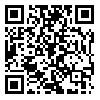Volume 22, Issue 3 (12-2023)
jhosp 2023, 22(3): 250-261 |
Back to browse issues page
1- Assistant Professor, Department of Pharmaceutics, School of Pharmacy, Ahvaz Jundishapur University of Medical Sciences, Ahvaz, Iran
2- Assistant Professor, Razi Herbal Medicines Research Center, Lorestan University of Medical Sciences, Khorramabad, Iran. Assistant Professor, Department of Pharmacoeconomics and Management, School of Pharmacy, Lorestan University of Medical Sciences, Khorramabad, Iran. *Corresponding Author E-mail: - hadihayati88@gmail.com
2- Assistant Professor, Razi Herbal Medicines Research Center, Lorestan University of Medical Sciences, Khorramabad, Iran. Assistant Professor, Department of Pharmacoeconomics and Management, School of Pharmacy, Lorestan University of Medical Sciences, Khorramabad, Iran. *Corresponding Author E-mail: - hadihayati88@gmail.com
Abstract: (79 Views)
Background: The rise in healthcare expenditures, particularly drug costs, has posed a significant challenge to the healthcare system. This issue is particularly critical for chronic diseases such as diabetes, as various factors influence patients' access to these medications and their financial ability to pay for them. Thus, this study aimed to investigate the access and purchasing power for anti-diabetic drugs in pharmacies and hospitals in Khorramabad city in 2022.
Materials and Methods: This descriptive-analytical study included patients and visitors to private pharmacies and hospitals in Khorramabad. The required information was collected through patient prescriptions, pharmacy records, interviews, and checklists based on the World Health Organization protocol. Data analysis was performed using t-test, chi-square, ANOVA, and logistic regression, utilizing SPSS version 21 software.
Results: The findings revealed that among the socio-economic factors affecting the financial ability to pay for diabetes medications, income level is identified as a significant factor, particularly in patients with underlying conditions, where their income is adversely impacted. Additionally, the results indicated that, unlike the free market, in the healthcare and pharmaceutical market, no socio-economic factor from the demand side (i.e., patients) influences pharmacies as drug suppliers in terms of the accessibility index.
Conclusion: Despite the good availability of medications in pharmacies, the financial constraints faced by patients in covering medication costs suggest that government intervention through measures such as enhanced insurance coverage and medication subsidies could support economically disadvantaged groups.
Materials and Methods: This descriptive-analytical study included patients and visitors to private pharmacies and hospitals in Khorramabad. The required information was collected through patient prescriptions, pharmacy records, interviews, and checklists based on the World Health Organization protocol. Data analysis was performed using t-test, chi-square, ANOVA, and logistic regression, utilizing SPSS version 21 software.
Results: The findings revealed that among the socio-economic factors affecting the financial ability to pay for diabetes medications, income level is identified as a significant factor, particularly in patients with underlying conditions, where their income is adversely impacted. Additionally, the results indicated that, unlike the free market, in the healthcare and pharmaceutical market, no socio-economic factor from the demand side (i.e., patients) influences pharmacies as drug suppliers in terms of the accessibility index.
Conclusion: Despite the good availability of medications in pharmacies, the financial constraints faced by patients in covering medication costs suggest that government intervention through measures such as enhanced insurance coverage and medication subsidies could support economically disadvantaged groups.
Type of Study: Original Article |
Subject:
مدیریت مالی و اقتصاد در بیمارستان
Received: 2023/12/11 | Accepted: 2024/05/17 | Published: 2024/06/11
Received: 2023/12/11 | Accepted: 2024/05/17 | Published: 2024/06/11
| Rights and permissions | |
 |
This work is licensed under a Creative Commons Attribution-NonCommercial 4.0 International License. |


